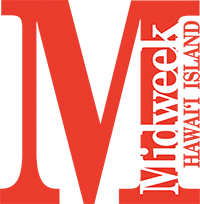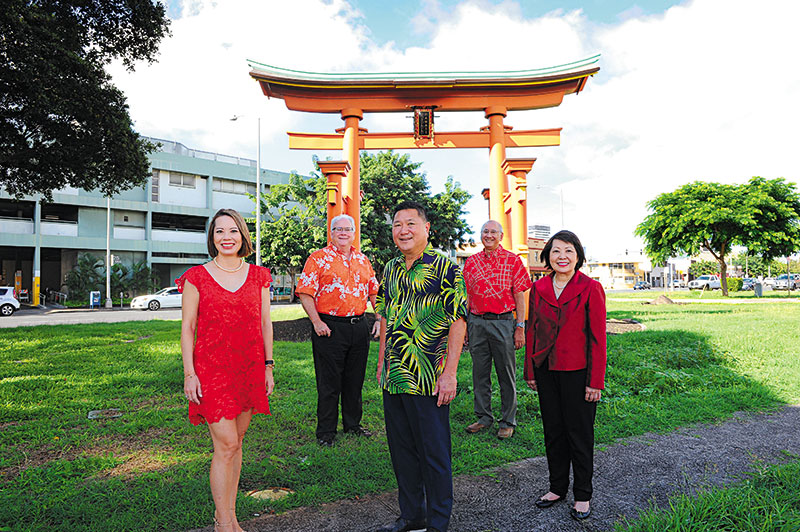Ganbatte!
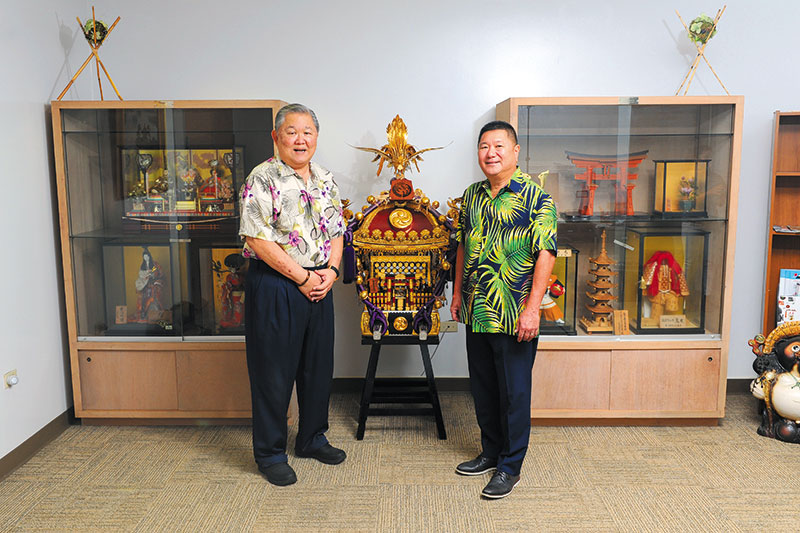
Wayne Ishihara and Jason Ito stand with a mikoshi, a portable shrine usually paraded around at festivals for good luck and protection.
The best is yet to come for the hard-working Honolulu Japanese Chamber of Commerce, which is celebrating 120 years of “members supporting members.”
In 1900, the bubonic plague had broken out in Chinatown. City officials attempted to strategically burn part of the district to keep the disease under control — but the flames blazed out of control, leaving 6,000 men, women and children destitute.
Of that 6,000, half were Japanese immigrants — who appealed to their countrymen to help them.
So, 37 Japanese merchants met one fateful day — March 12, 1900 ¬— and founded the Honolulu Nippon Shonin Doshikai (Honolulu Japanese Merchants Association). They helped the people however they could, finding them shelter, helping them file claims with the government and more.
Several years later, the group renamed itself the Honolulu Japanese Chamber of Commerce, and it has continued to thrive ever since.
Ordinarily, a year like this one — HJCC’s 120th anniversary — would be filled with reminiscences of triumphs past, celebrations of every variety and a look forward at great things to come. Meetings would be held regularly; socials would be, too, and there would’ve been at least one big banquet.
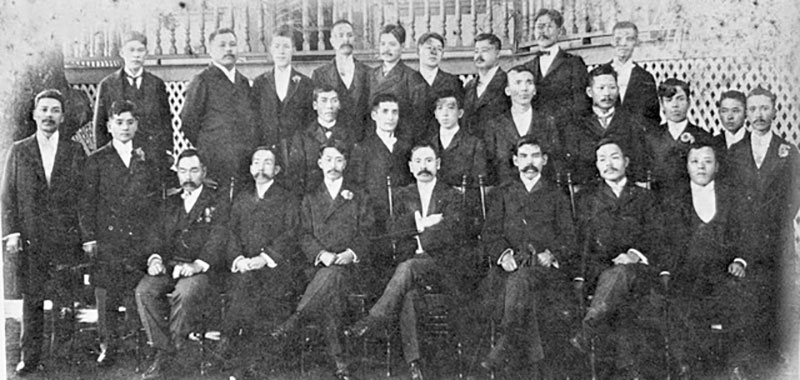
Members of the 1903 iteration of the chamber gather for a photo. HISTORICAL PHOTOS COURTESY HJCC
But history has a funny way of repeating itself.
“I started as volunteer chair right in the middle of the pandemic,” laughs Jason Ito, HJCC 2020-21 board chairman.
So, to best serve the group’s 550 members during an unprecedented time, everything had to pivot around the organization’s guiding principle: “members supporting members.”
“Recently we completed a project,” Ito offers as an example. “Nine, 10 of us took our entire membership list, and we called our members. ‘How are you doing? What can we do for you? Is there anything we can do that we’re not providing or not something we would normally do?’”
That kind of intimacy is a little difficult to achieve at a bustling luncheon — but they’re perfect for a time when face-to-face meetings are forbidden.
Those talks went hand-in-hand with the re-imagination of said meetings and socials.
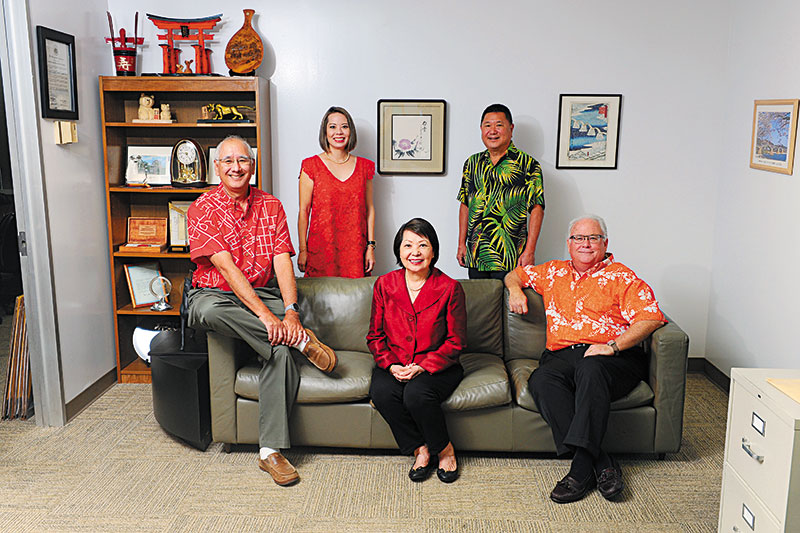
Honolulu Japanese Chamber of Commerce members Tyler Tokioka, Kristi Inkinen Yanagihara, Kathryn Inkinen,
Jason Ito and Clayton Hill relax in the HJCC office at Japanese Cultural Center
The traditional, 1,200-person Chopsticks & Wine gala, for example, was revamped into a Zoom lecture from Jason Fukeda of Fujioka’s Wine Times, where he discussed different kinds of wine (of which viewers could pick samples up from Fujioka’s Wine Times). The Samurai Classic golf tournament saw members set up their own tee times and then convene for a virtual reception in the evening.
There have also been educational webinars.
“We got small-business owners to agree to share what it takes to be successful, what they would do differently if they had to start again, general advice on the mentality and the personality you need to be a small business owner,” explains Wayne Ishihara, HJCC president and CEO.
HJCC board director Kristi Inkinen Yanagihara cites a Zoom fatigue training exercise that the Women’s Diversity committee put on, focusing on how to make Zoom more interesting to both yourself and your viewers.
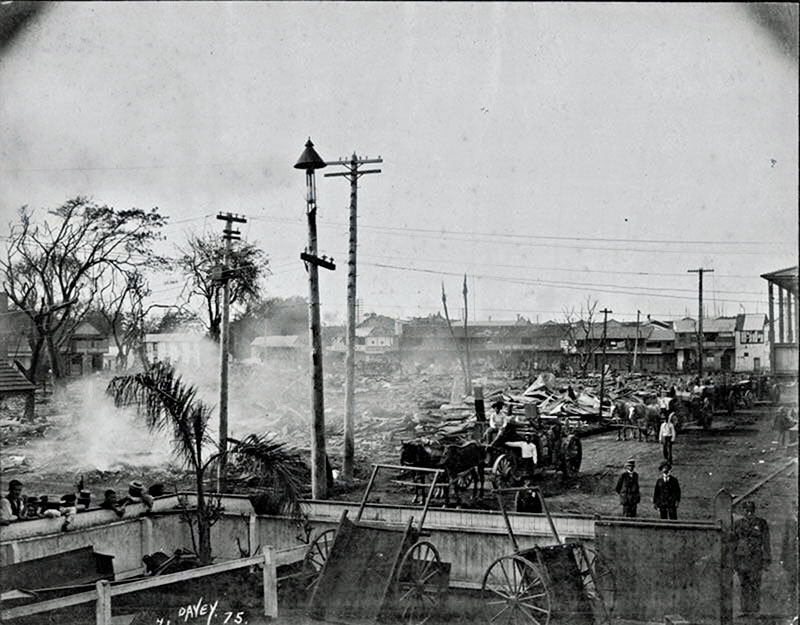
The aftermath of the Chinatown fires of 1900. PHOTO COURTESY HJCC
“We had a game night,” says Tyler Tokioka, a third-generation member and former board chairman. “We had maybe 12, 15 members join, and then they did a scavenger hunt via Zoom, we did a trivia contest via Zoom.
“For me, those are the ones I enjoy more. It affords me and all of us to reconnect from a social aspect with members and friends.”
All this, of course, is in addition to regular email updates about COVID-19 policies from the city and state, fully staffed telephone lines for anyone with inquiries and just about everything else HJCC could think of.
At this point, the question might seem to have become: What more is left for HJCC to improve on?
But their answer is swift and unanimous: diversity.
“The chamber is 120 years old, but I would say until about 15 years ago, most of the members were men, quite honestly,” says Kathy Inkinen, former board chairwoman. It wasn’t, she continues, a matter of sexism. There simply weren’t a lot of female business executives or owners around to join an organization like HJCC.
Inkinen, in fact, is only the group’s second-ever chairwoman, having served in 2007-08.
But today, some 27 percent of HJCC members are women. The aforementioned Women’s Diversity community is focused on recruiting more.
The group also hopes to break the stereotype that one needs to be ethnically Japanese to join.
“I assumed I wouldn’t be able to do some things because I don’t speak Japanese,” jokes Clayton Hill, HJCC board vice-chairman, admin and secretary. “But I’ve been in Hawaiʻi a long time, I’m not Japanese, but I like what it stood for, the organization of the operation and the caringness of the operation. That’s what got me involved.”
HJCC also is focused on retaining younger members (those who have been with the group for two years or fewer) and on maintaining its overseas partnerships with Japan.
“The Japanese part of it, from my perspective,” adds Inkinen Yanagihara, “is in the values that the membership brings as it relates to their own businesses. We use the word ‘ganbatte’ — perseverance, working hard, striving to achieve.
“That’s the Japanese sort of ethics and traditions that we bring, the business mentality, if you will. It’s the values that we have, that will be shared across the membership, Japanese or not, whoever you are.
“Everybody’s helping each other to grow.”
